In these days of instant messaging, social media and nowhere to hide, I often spare a thought for the humble typewriter. For some reason, typewriters have always been a passion. I taught myself to type, full-qwerty fashion, when I was 14 years old. By the time I became a journalist at the age of 19, I was fleet of finger and could run rings around my colleagues on the qwerty keyboard.
This was a time when female “secretaries” guarded the mythos of keyboard operation. Few men could type unless they were journalists or members of a select few other professions. Not a letter could be sent without the secretary’s fingers hovering over the mysterious keyboard.
Qwerty lore
Things have now come full circle. The computer, the smartphone and a frenzy of electronic communication have meant that most people are familiar with qwerty at an early age. Everyone is can use the qwerty keyboard to some degree and few wonder the letters are all jumbled up in such a strange fashion. It was not done to slow down typing to avoid clashing keys, as many believe, but was a genuine effort to group letters in the most logical layout for fast typing.

The survival of qwerty is now down to the computer. Many efforts have been made to popularise alternative layouts, but none has succeeded because of the overwhelming dominance of the tried-and-tested layout.
Typewriters always played a big part in my life. When I started work as a journalist for “The Motor Cycle” in 1962, I had the run of a magnificent collection of old typewriters dating back to the Twenties or earlier. Somehow, the office had accumulated at least 25 of the beasts, most of which were sitting unused on top of filing cabinets. I was in my element.
I started with these ancient office machines, such as the Imperial, the Royal or the Remington “Silent”, and then moved on to the electric typewriter. The early models offered power assistance to the keystrokes. Then came the IBM Selectric “golfball” typewriter that created a new revolution.

For the first time, it was possible to swap typefaces (with the more expensive IBM Composer) and, even, achieve justified print-style text and proportional spacing.
Typewriters relied predominately on two monospaced fonts, pica (10 per inch) and elite (12 per inch) and, of course, you couldn’t change from one to the other. I know many people who kept several machines, one for pica, one for elite and one for italic.
Indeed, my grandfather, Harry Evans, was one of those typewriter fanatics and, I feel sure, I have inherited the pica gene from him. I mirror him precisely in my love of typewriters, pens and notebooks. He was a grocer because his father had been a grocer.
Grocer secretary
He owned a busy shop in Wigan, Lancashire, and some of my first memories were of him serving a string of customers behind his counter. I loved delving into the open dispenser to grab a handful of currants.
In those days, before supermarkets, customers queued at the counter for the personal attention of the grocer. Almost everything, from sugar to butter, to bacon, was loose and had to be measured and packed. Biscuits inhabited large square tin boxes arranged on a wooden framework; the bacon slicer was in constant use, and sugar was dispensed in thick blue bags without marking.
It was the time of rationing, following the war when everything was produced for maximum efficiency. There was little actual choice to be had.
Harry would stand there, indelible purple pencil behind his ear, fetching, carrying and packing all the requirements in greaseproof paper. He would then take the pencil, moisten the tip (to release the indelible ink) and list everything in pounds, shillings and pence on a piece of greaseproof paper. A whole week’s shopping could be had for less than one pound.

When the shutters went up at the end of the day, Harry was transformed and could pursue his more cerebral passions. He was a lover of poetry, he had a musical bent and was a church organist for most of his life. And, perhaps more relevant to this story, he was a keen writer. His writing and his prowess with the keyboard inspired his impressive collection of typewriters, one for every occasion and style of print.
A keen cyclist, he wrote articles for cycling magazines. Every article was typed on wartime-stock paper, using several machines to achieve the best effect, and bound in brown paper. This was wartime make-do during a period when even the most basic of office supplies had disappeared.
Harry also taught himself Pitman’s shorthand, to complete his secretarial ambitions, and he became good enough to teach shorthand at Wigan Technical Collage to a new generation of lady secretaries.
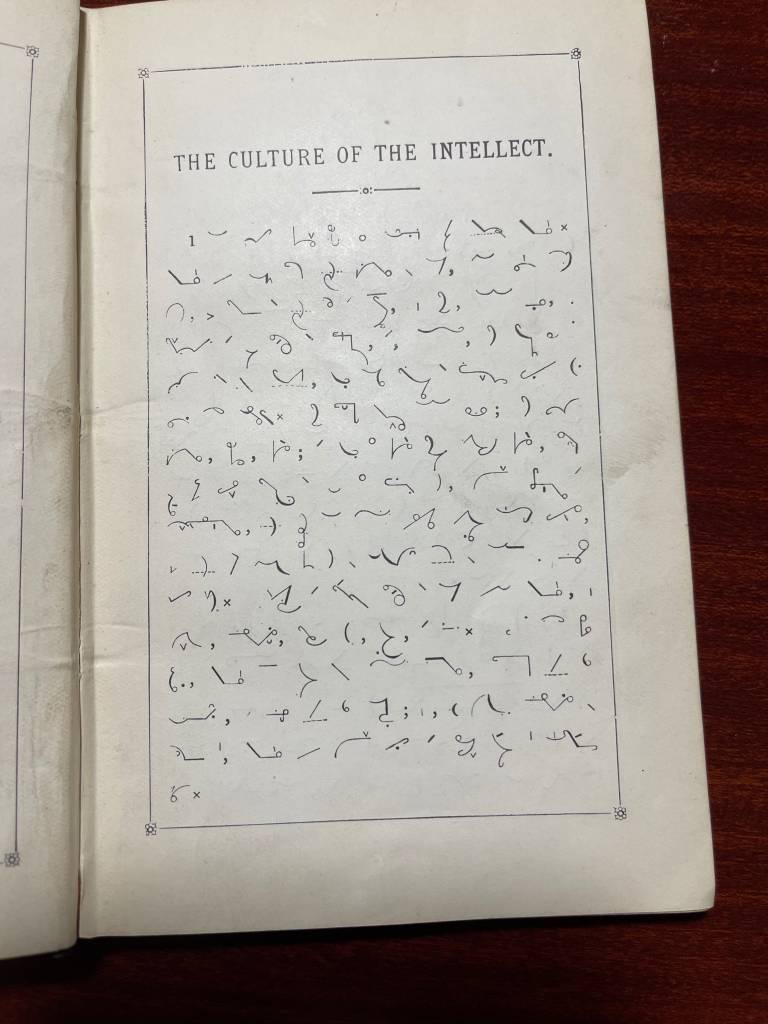
Bug inherited
It’s no surprise, then, that I was smitten with the same passions. I surpassed my grandfather in everything but organ playing and shorthand (at both of which I am a miserable failure).
My typewriters became more and more advanced, and I was a dab hand at letter writing: Writing paper, a sheet of carbon and a flimsy backing sheet to take a copy of the original. I was clattering away day and night and, invariably, my best work was done on a full-size office typewriter.
But I was always fascinated by the portable. I carried around a typewriter as I would today travel with an iPad or MacBook. I always needed to be able to turn my thoughts into typescript.
As a result, the lightest and smallest portable was the ideal. There were many designs to choose from, although my favourites were the Olympia SM8/9, a mid-sized “portable” that really doubled for office typewriters, and the svelte Olivetti Lettera 22 and 32.

Oztypewriter
A few months ago I was introduced to an Australian typewriter blog by Robert Messenger, Oztypewriter and I have been an avid reader ever since. The site specialises in typewriter use, particularly among famous names of the past. Which film star or author used which machine? Who had a gold-plated portable (Ian Fleming, no less) and which typewriters are the ones to own and collect? Wonderful stuff, really.
I was touched to read on Oztypewriter that the Olivetti Lettera 22 has just celebrated its 70th birthday. To mark this occasion, the Italian post office has issued a stamp featuring the popular little writing machine.
The Lettera 22 is one of the most prolific portables ever made and my current version, the later Lettera 32, which is probably a good 40 years old, is typing just as reliably and clearly as it did the day it was born. There aren’t many consumer goods produced these days about which you can say this. Happy seventieth birthday, Olivetti Lettera 22.

On this nostalgic note, Macfilos is closing down for two weeks. There is just one article to come, a fascinating reconstruction of the Swiss Roll journey of 1950. That will be published tomorrow and Macfilos will return on January 4.
We would like to wish all our readers, our band of contributors and our helpmates—in particular, Leica, Panasonic, Sigma and Red Dot Cameras—a happy Christmas and a successful New Year. Let’s hope that 2021 proves to be a better year than the one we have just endured. Unfortunately, London is in strong lockdown again, possibly for the duration of the winter, and opportunities for photography are minimal. We’ll be off to a shaky start.




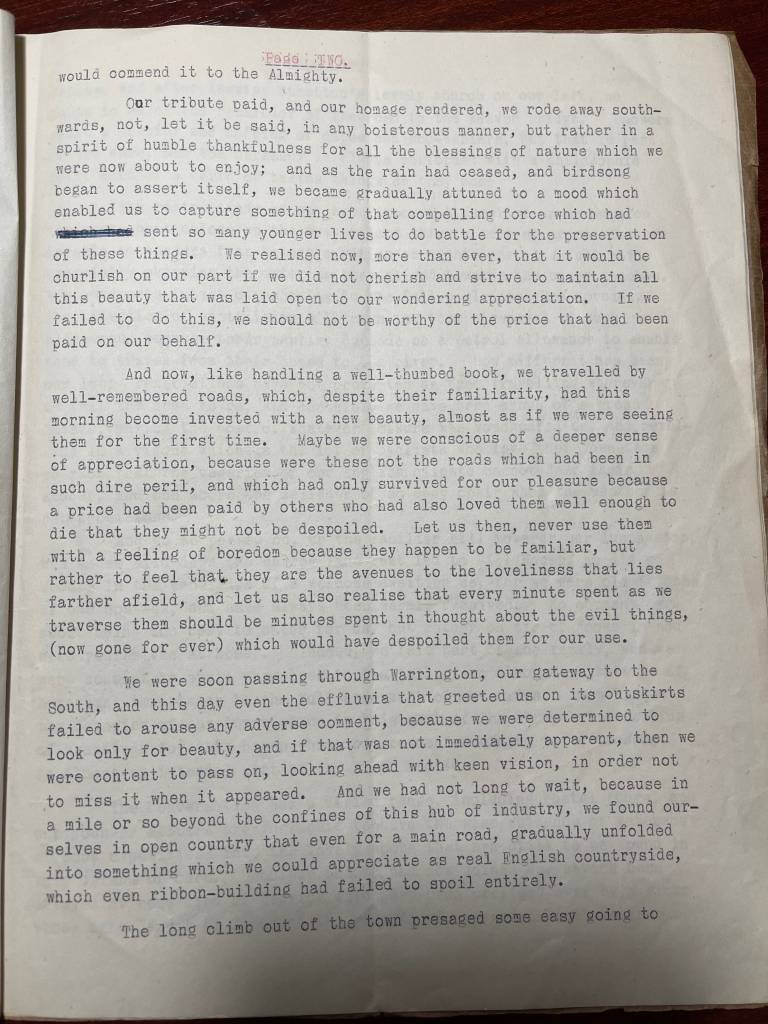

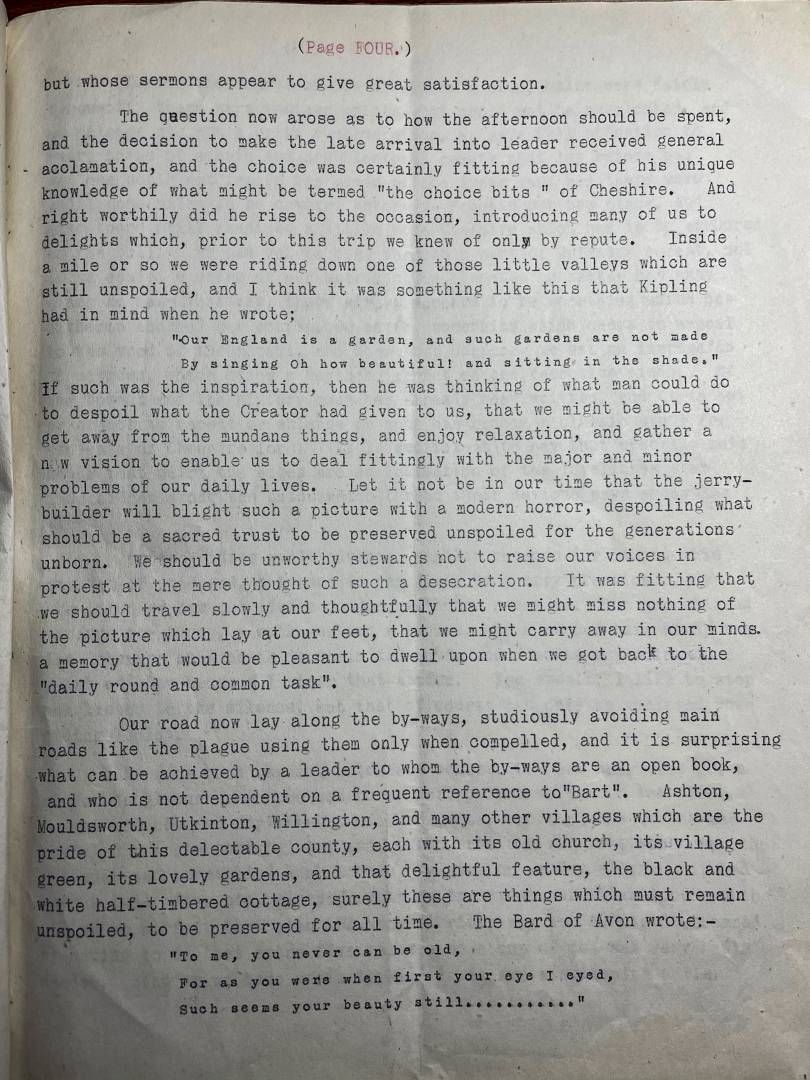
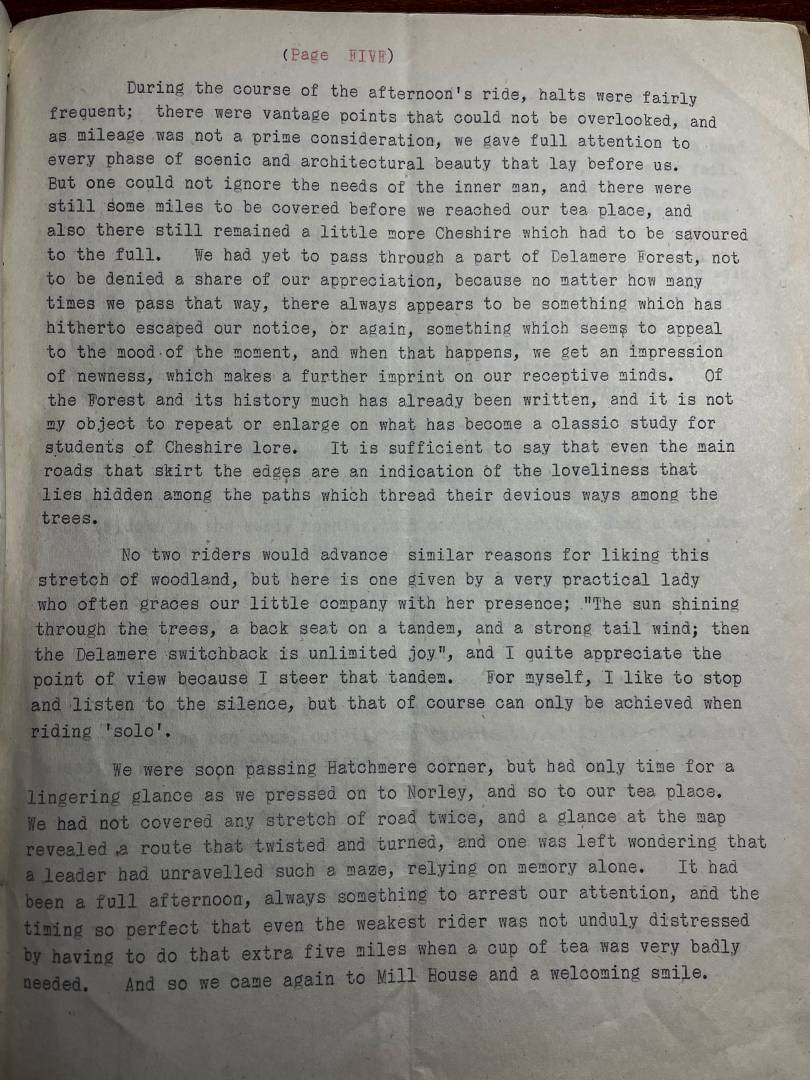
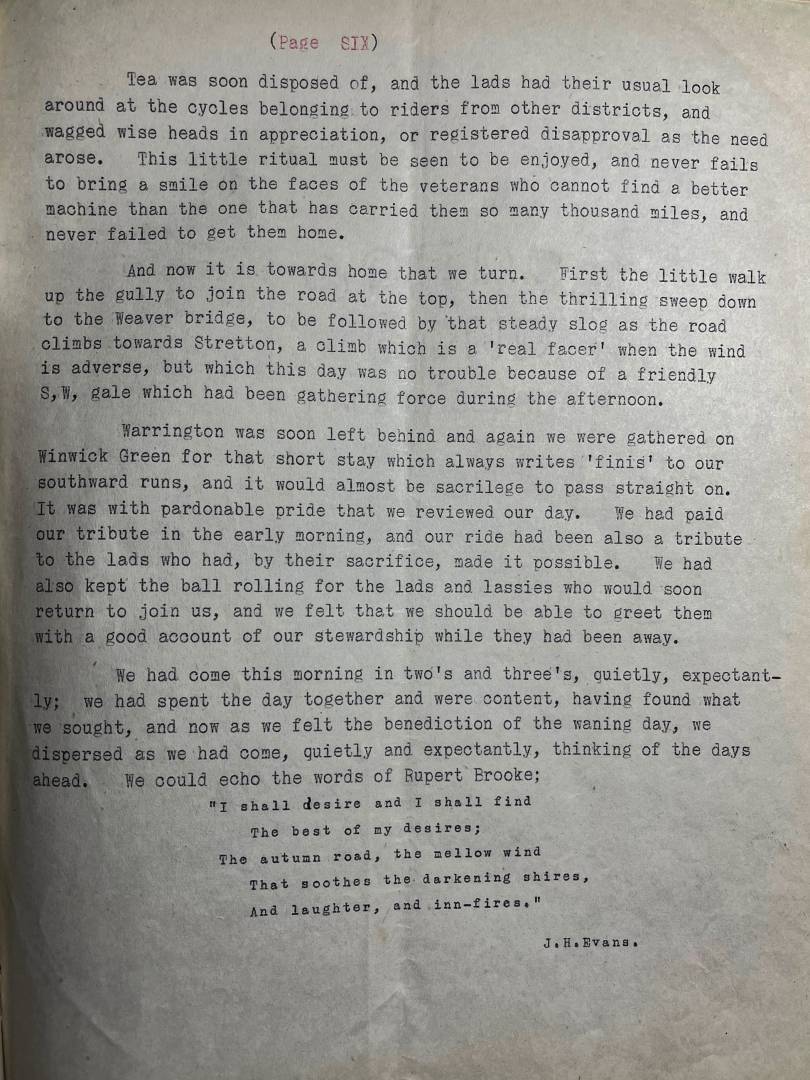




Thanks for this Mike.
I enjoyed reading your grandfather’s article and his words ‘restrictions have not prevented us from travelling wherever we felt the urge to go’.
It struck a chord given that I am living under Tier 4 Covid restrictions but see many cyclists enjoying the countryside roads around here in Surrey. His joy at the end of the conflict shines from every page.
I never had much need for a typewriter but the way they were replaced by computers brought to mind the change when computer aided design (CAD) replaced traditional drafting in engineering offices. I had to study technical drawing at university and always found it difficult so envied those draftsmen and women who could produce drawings that were both functional and works of art. Later I witnessed the start of the CAD revolution as the senior draftsman in the office, generally treated with suspicion, persevered with his fledgling CAD department of one. In another office I worked with others who held on to their precious pen and paper knowledge (and power) for dear life and wouldn’t share it readily. They could bring a design project to a halt if they so wished but (in their case thankfully) would have been swept away by the tide of change. I suspect few ever made the transition to the world of CAD.
Though one difference that comes to mind is that replacing pen and paper drafting with CAD made the process more specialised whereas with typewriters and computers the opposite happened.
Mike, thank you for the article although typing on a keyboard is hard work. thanks for running this amazing site. A merry Chritmas to you and all contributors and readers of Macfilos
I remember the strong smell of freshly ground coffee from Limmer & Pipe’s store as I walked past as a young boy living in Ipswich. The smell seemed to pervade the whole town centre.
Chris
Hi Chris, Yes, Limmer’s roasting coffee beans fragrance was a Buttermarket hallmark … those happy days included visits to Cowells, the Ancient House and Footmans … and Portman Road where entry to the ‘Boy’s Stand’ to see Ipswich Town play cost just 9d in real money. I also witnessed the headmaster’s public floggings at Westbourne School’s morning assemblies … it’s a different era now.
Your mention of 9d reminds me that no one ever pronounced this as nine-dee. It was always ninepence, one word. I hated that incontinent 9p or nine “pee” from the start and never understand why it persists. It will always be ninepence to me.
It’s the same with the years in the new century. Whoever deciding to say, and continue to use, two-thousand-and-nineteen? It’s twenty nineteen but it’s taken many people twenty years to accept the obvious.
Our wonderful pre-decimal currency … when a farthing was 1/960 of a pound … and a quid was 20 shillings … 12 pennies or coppers made a shilling or a bob … as did two tanners or four threepenny bits … and a tanner could be split into two threepenny bits …. nickel threepenny bits had superseded silver joeys … two bob (a florin) on a Saturday was my pocket money … until given a rise to half a dollar (2/6d) … two ten bob notes made a quid … and in London an imaginary nine bob note was a symbol of dishonesty and untrustworthiness.
The old currency is built into the language: A penny for your thoughts, here’s my twopenn’oth, thruppnybit, tuppence. And Imperial (oops, mustn’t mention that) measures as well: Give him a yard and he’ll take a mile. None of these translate easily into soulless decimals.
Mike, Your grandfather’s achievements and lifestyle could be immortalised in a box office television documentary. I have vivid memories of Limmer & Pipe’s ‘olde worlde’ grocery store and restaurant in Ipswich, Suffolk where in 1958/61 my father was general manager. I worked there part time aged 14 – weighing and bagging sugar, teas, coffees, biscuits, bacons and cheeses … every variety under the Sun. Unfortunately the business was bought by Charles Forte’s hotel and restaurant chain, asset stripped, and the prime Ipswich Buttermarket site sold for redevelopment. Thus my transiently employed father had to again use his trusty Remington portable typewriter to compose more job applications; a fairly regular occurrence in our household. I could never master the Remington’s QWERTY keyboard and neither could my father – but somehow, with the assistance of a razor blade eraser, he produced mini career biographies which earned him interviews for the next insecure grocery / catering management position. CVs were unheard of in the 50s and 60s – dad’s job applications were extended essays. My sister inherited his typewriter but I have his prized Parker 51 dual pen desk set … still in working order. I have to admit that proper handwriting using a fountain pen gives me far greater pleasure and satisfaction than any keyboard – and it’s relaxing too. Why bash away on a QWERTY keyboard when a fountain pen can inspire and create with a unique tactility that a typewriter or an Apple keyboard can never match? Perhaps I was born in the wrong era; maybe I should consider abandoning digital cameras and resurrect my Hasselblad 500 CM. In 1978 tried to use an IBM golf ball typewriter for office forms design; either me or the typewriter was hopeless. My beautiful Rapidograph pens and Rotring stencil set saved the day … they achieved forms designs and spacings that a typewriter could never emulate. Happy Christmas to all – and I look forward to another year of Macfilos scoops.
Dunk, thanks for the trip to the grocery store in Ipswich. Even though I love typewriters, I also have an addiction for fountain pens. I have several Parker 51s and a collection of Montblanc and Kaweco pens. There’s nothing like a 51, though, and I purchased my first at the age of 18 at Boots in Manchester Exchange for the enormous sum of six guineas. At least, when you are earning £3 a week, £6.6s.0d was a great sum.
Looking back, I can see that my grandfather was a remarkable man. He probably left school at 14 (he was born in 1888) and was more or less expected to take up grocery. If he had had a proper education I imagine he would have gone far. As it was, for a self-educated man, his abilities were outstanding.
Thanks for sharing your memories.
Mike
My go to fountain pen through university was a teal Parker 51 Aerometric. The back up was a light dove 51 with the Vacumatic plunger system. Both prized possessions of my mother who brought it with her from Brazil – where Parker pens were considered a luxury item.
Currently own Montblancs and Kawecos, but my go to for work document signatures is a fine nib Rotring 600 fountain pen…with Noodler’s “North African Violet” ink.
The Kawecos are almost unknown here but they are wonderful instruments. Whenever I am in Berlin, which used to be frequently before COVID, I pay a visit to KaDeWe where they have a dedicated Kaweco island counter.
Merry Christmas to all at Macfilos!
I bought the Olivetti Lettera in the early 1960s going up at Cambridge and used it forever – I think my brother still has it stored when I went to the States. I wish I had kept it though!
I have bought and sold. I first had a Lettera 22 and sold it. Then came the Lettera 32 which I have managed to keep all these years. I still to take it off the shelf ans write the odd letter. No predictive text, though. However did we manage? We had to learn how to spell, for a start.
Hi Mike, I wish you and the Macfilos community a Merry Christmas and a 2021 filled with joy. You deserve a refreshing break but I suspect the blog will always be on your mind 🙂
That I you Brian. And thanks for bei by such a faithfully commenter… or is it commentator ?
It looks like you are already enjoying Christmas cheer!
Thanks Mike. Your grandfather sounds like a wonderful man who enjoyed both his work and life ‘after work’ as well. I love that bicycle article ending with a bit of Rupert Brooke. He would have loved ‘the molecular theory of bicycles ‘ from ‘The Third Policeman’ by Flann O’Brien. My wife, who you have met, was once secretary to that author’s brother.
Moving on to typewriters, a friend of mine who was a Professor of Latin and Greek was very enthused about IMB golfball typewriters when they came out first. But then a conversation started every time I met him about a Greek golfball for his new IBM typewriter. Nearly a year had passed before he eventually got what he wanted. I asked him at one stage during the ‘long wait’, ” Surely IBM must serve the Greek market? “. He replied “Yes they do, but what I want is an Ancient Greek golfball”. There’s no pleasing some people, I suppose.
Have a great Christmas and New Year.
William
Thanks, William. Sadly my grandfather died at the age of 62 when I was seven years old. Although I remember him well, another 10 or 15 would have enabled me to appreciate his talents more thoroughly. I do remember him plonking me into a home-made child seat on the tandem, with grandma between us. But I think I would have been a bit too young to go on that particular trip to Cheshire.
On the IBM Golfball, it is now hard to understand just his revolutionary it was to be able to choose a typeface or, even, a foreign language for the first time.
Hi Mike,
I wish you and the many readers of Macfilos a Merry Christmas and a Happy New Year. Thank you once again for a year filled with amazing articles and anecdotes. Looking forward to 2021 and your thoughts on the Leica Q2M you had on lown. Cheers to you all!!!
Jim Boychuk
Thanks, Jim. I must get round to the Q2M, although we’ve had a lot of monochrome stuff recently.
ENJOY THE TIME, WITH OR WITHOUT LEICA!
Thank you John. Have a good Christmas and all the best for 2021. And this extends to all readers, regular or occasional.